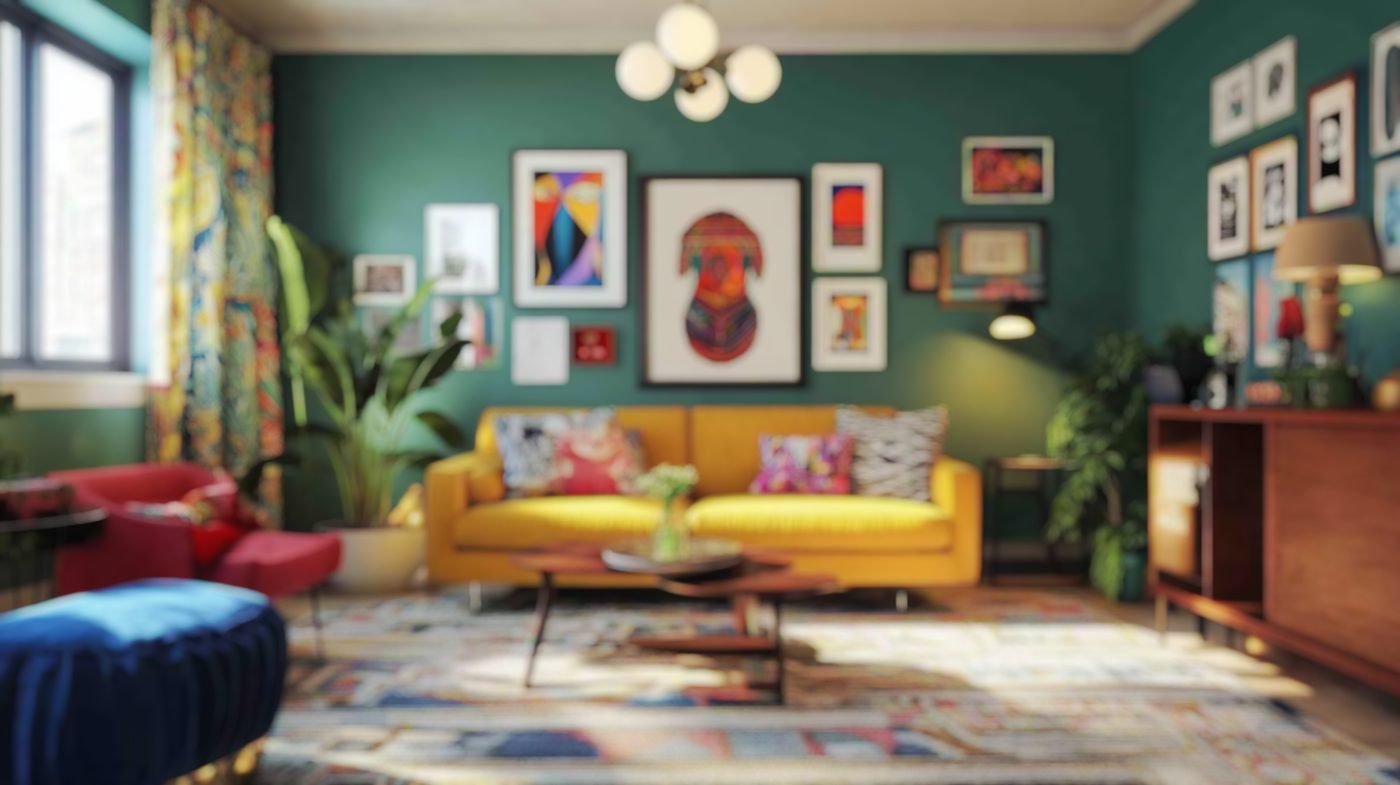Who said it ever really went away?
Let’s first define what we’re talking about. Maximalist interior design is the art of collecting and layering objects—things inherited or gathered over time. For some, this might veer into hoarding territory, but it doesn’t have to be that extreme. Maximalism is the opposite of minimalism, which is known for restrained color palettes, a lack of objects, and the Marie Kondo-inspired approach of “If it doesn’t spark joy, get rid of it.” Minimalism values function and simplicity—if you need a chair, well, there’s only one.
Recently, we’ve seen a shift from years of minimalism to maximalism. But why is that? Jennifer Howard, author of Clutter: An Untidy History, suggests that maximalism is a strategy for self-comfort. I think that’s part of the story. The pandemic forced people to spend more time at home, and with that came a wave of introspection. Many realized they weren’t content with their surroundings and needed something more, or perhaps they needed to redo their spaces entirely. Closed businesses and limited recreational options led to a surge in online shopping—people began to fill their homes with items that brought comfort. They weren’t just buying necessities; they were collecting things that made them feel good.
If you’re going to be home all the time, why not make it a space you love? That’s where maximalism thrives. Think vibrant tiles instead of sterile white, layered patterns on wallpaper, fabrics, and furniture, all coming together in a hand-picked visual symphony. It’s about surrounding yourself with things that bring joy, whether they’re heirlooms, collectibles, or personal treasures.
This isn’t a new phenomenon. While we could point to ancient times where intricate, mosaic floors were paired with painted, scenic and ornamented walls, the Victorian Era provides a striking example of maximalism. Queen Victoria reigned from 1837 to 1901, and during her time, homes became rich with décor and personal objects. The industrial revolution made mass-produced goods more accessible, and as people traveled the world, they brought back unique artifacts to fill their homes. The result was a wildly varied style based on personal experience, wealth, and social class—no two Victorian homes were alike.
But even in Victorian times, minimalism had its place. William Morris, the figurehead of the Arts and Crafts Movement, famously said, “Have nothing in your houses that you do not know to be useful, or believe to be beautiful.” His approach was about simplicity, using decorative patterns but balancing them with simple, functional furniture. This tension between maximalism and minimalism has always existed.
Another key historical moment was the death of Prince Albert. Queen Victoria, devastated by his passing, filled her life—and her home—with objects that offered comfort. This created an era of collecting, a desire to surround oneself with meaningful things.
Fast-forward to today, and the internet has created an entirely new landscape for home décor. Shopping is no longer confined to physical stores; we can now browse an endless number of online shops, from eBay to Chairish, Pottery Barn, and beyond. The sheer ease of access to products has made us more likely to fill our homes with “stuff”—whether it’s for convenience, comfort, or sheer enjoyment.
There’s also a generational element at play. Millennials, who grew up with online shopping, have a different attitude toward consumption than previous generations. For them, shopping online is second nature, whereas older generations remember a time when department stores and physical shopping were the norm.
Cultural shifts, too, play a role. In the aftermath of WWI, Art Deco emerged as a reaction to the previous excess. During the 1930s and ’40s, simplicity was the rule. But today, we are living in a time of excess—luxury shopping may be on the decline, but accessibility is the new luxury. People aren’t just buying less, they’re buying more of things that hold personal meaning.
As for Marie Kondo, the queen of minimalism, her recent admission that maintaining a perfectly tidy home is difficult with children speaks volumes. The minimalist approach that worked for her before doesn’t fit her current reality. She now embraces a more flexible, practical way of living.
In cities like New York and Chicago, we’re also seeing a trend where some people leave their curtains open to the street—inviting passersby to peek into their homes. This is another manifestation of maximalism: a desire to show off our personal, curated worlds. It’s a visual feast, one that tells a story about who we are and what we value.
So, is maximalism here to stay? For now, yes. People crave comfort, self-expression, and a sense of meaning in their surroundings. The internet makes it easier than ever to accumulate objects, and we’re increasingly motivated by the emotional value of what we own, rather than its utility alone.
But life is cyclical. Designers predict that we’ll soon see a return to Art Deco—another period of glamour and excess. We may experience a period of austerity, only to see a rebirth of maximalist design. For now, though, it seems that maximalism is not just a trend—it’s a reflection of the times we’re living in.
